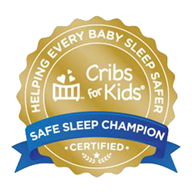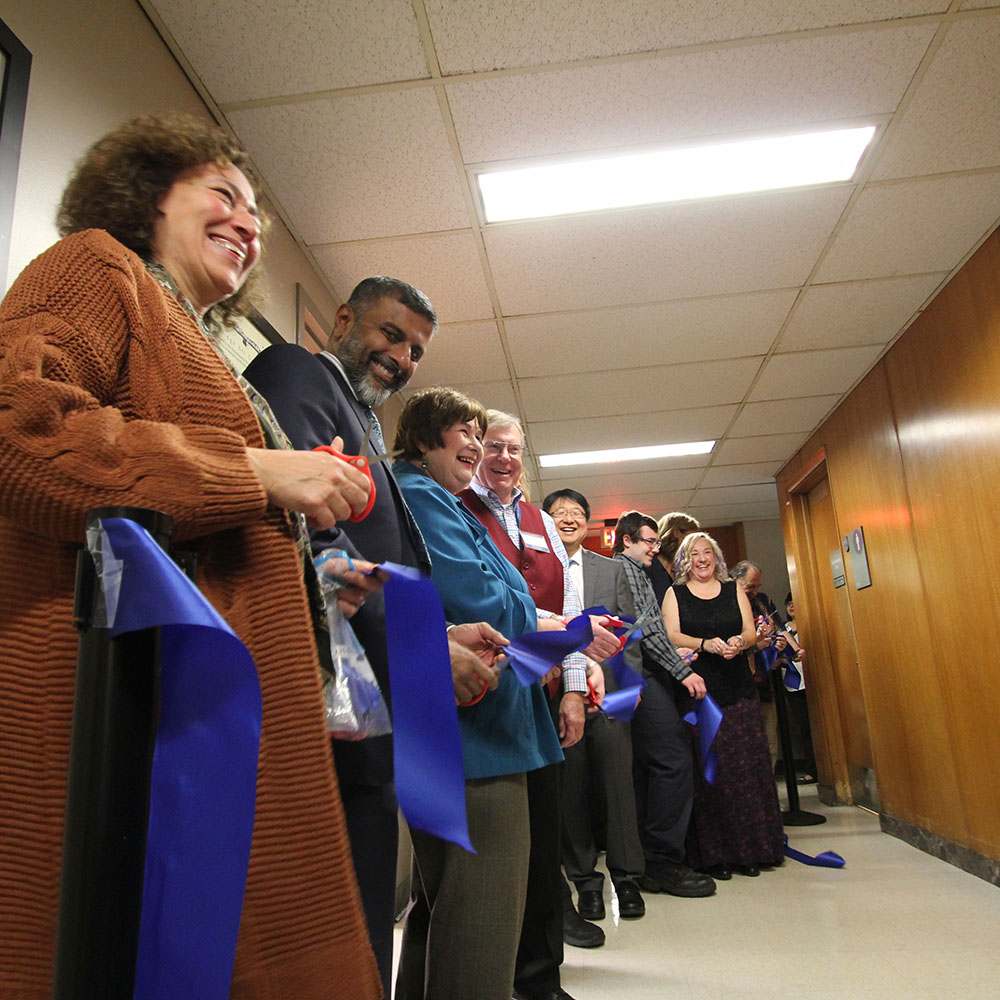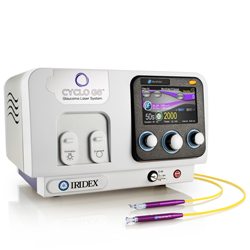Discharge Lounge Pleases Patients, Frees Beds Faster
 It’s a classic problem industry-wide, and Strong isn’t exempt: Emergency Department overcrowding. ED patients looking to be admitted as hospital inpatients to continue their care can find that there aren’t always inpatient beds available when they’re ready to be moved.
It’s a classic problem industry-wide, and Strong isn’t exempt: Emergency Department overcrowding. ED patients looking to be admitted as hospital inpatients to continue their care can find that there aren’t always inpatient beds available when they’re ready to be moved.
Strong Memorial Hospital’s Patient Discharge Lounge grew in part from this overpopulation challenge. (At times, 40-plus patients have waited in the ED for an inpatient room.) How could we move ED patients into the hospital faster? Digging a layer deeper to the root of the issue: How do we free up inpatient beds quicker to accommodate the ED admissions?
Overcrowding, and the tangle of issues that sprout from it, is no bed of roses to say the least—but our folks took a shot at addressing these tough questions.
Try breaking apart the four- to five-hour discharge process—a series of paperwork and events whose every piece has its own potential complications to contend with—and ushering patients who don’t need their beds anymore to another locale. That’s what Laurel Pye, nurse manager on the Surgical Trauma floor, and her team did—respecting the delicate dance of seeing that a departing patient’s medical, insurance, pharmaceutical, and transportation needs are met. It goes without saying that dealing with these details and the waiting can be tedious, and folks get antsy. Laurel has found, though, that physically moving patients from their rooms to the lounge helps them understand they’re moving through the process.
 The lounge opened its doors on the sixth floor in January 2014. Laurel had been tasked with gathering resources and getting it off the ground. Unfortunately, that iteration of the lounge lasted only until April, when it closed, under-used. The idea then was to pull in UR Medicine’s Lean team to drum up a list of improvements that would help traffic, and then to resurrect it. (For more news from the Lean team, including a patient discharge success story from Unit 6-1600 (Acute Care Medicine), visit the Lean Intranet site.)
The lounge opened its doors on the sixth floor in January 2014. Laurel had been tasked with gathering resources and getting it off the ground. Unfortunately, that iteration of the lounge lasted only until April, when it closed, under-used. The idea then was to pull in UR Medicine’s Lean team to drum up a list of improvements that would help traffic, and then to resurrect it. (For more news from the Lean team, including a patient discharge success story from Unit 6-1600 (Acute Care Medicine), visit the Lean Intranet site.)
It’s working! In October, the lounge reopened—fingers crossed that it’s for good this time—to welcome patients.
Peek in and Marianne Cook, RN, will most likely be there. She coordinates and staffs the lounge. With 21 years of experience at Strong, and 30 as a nurse, Marianne’s background includes time in the Emergency Department, where she witnessed the need to keep patients moving through the hospital system. She remembers the burden backup in the process flow placed—and continues to place—on staff as well as patients.
The effort is already paying off. As of Dec. 19, 148 patients total had used the lounge, freeing up approximately 214 hours in inpatient beds.
To round out the data, the Lean team is in the process of putting together an analysis of the lounge based on a model in literature. It will examine the opportunity costs of boarding patients in the ED. The team predicts that use of the lounge will translate to increased hospital revenue, by generating greater throughput in our system.

Making it happen
If you’re wondering what it takes to morph a conference room into a lounge, in a word, it’s cooperation. In this case, Laurel coordinated with Infection Prevention (to scour the space and bring it to code); Facilities and Services (to outfit the room); the Patient- and Family-Centered Care office (provider of parking vouchers, coffee, and so on); Social Work; our ambassadors (who escort patients there); and others to bring it to life. Individuals instrumental to the project were Jill Sheflin, administrative assistant to Pat Witzel, Strong’s chief nursing officer; Jennifer Harris, senior clinical nurse specialist; Mark Ott, senior nurse manager in Critical Care Nursing; and Wendy Cellini, administrative assistant to the associate director of Adult Medical/Surgical Nursing.
And talk about pulling together and springing into action: The lounge existed in idea form only one Wednesday afternoon in January last year; Laurel got a phone call that evening saying make it happen; and Thursday morning, two outgoing patients found themselves the lounge’s first guests. The second go-around was just as snappy.
The fine print
For the time being, it’s optional (but strongly recommended) for patients to utilize the lounge. Laurel and her team urge more units to make use of this opportunity.
Alongside a focus group made up of unit care coordinators, Laurel is trying to pinpoint barriers for those who didn’t or couldn’t use the lounge. One possible hurdle is with staff, because it’s a new step whose integration does require some extra effort—mostly in transporting patients to the lounge, a task our ambassadors, Friends of Strong volunteers, and Be Employed Be Successful students are pitching in to address. A smaller hurdle may exist with some patients, a handful of whom have been hesitant to leave a maybe more reassuring-feeling hospital bed. (Brochures are being printed up for distribution on units to educate patients that the lounge is indeed a safe part of the discharge process. If you need some, contact Laurel.)
Nurses are able to view patients’ eRecords. Laurel says the idea is to teach them to do so proactively, keeping an eye on a patient’s discharge status. As soon as the discharge order is put in, unit nurses and care coordinators are strongly encouraged to contact Marianne promptly with the patient’s “Ticket to Ride” (the home unit’s hand-off tool) and introduce patients to our—to their—new lounge. Marianne can best be reached by web pager, or at 16-2297.
 On any given day, up to nine patients come and go. Outfitted with such creature comforts and standard amenities as recliner chairs and accompanying tables, privacy screens, a fridge for snacks and drinks (refreshed by Food and Nutrition Services), and a T.V., its big windows offer a glimpse of the outside—where some patients, maybe, haven’t ventured in recent days. Marianne is ready to administer meds, help with paperwork, continue patient care, and react should any need arise. “We absolutely maintain continuity of care. This isn’t just a waiting room—it’s no different than if the patient was still on the unit,” she said.
On any given day, up to nine patients come and go. Outfitted with such creature comforts and standard amenities as recliner chairs and accompanying tables, privacy screens, a fridge for snacks and drinks (refreshed by Food and Nutrition Services), and a T.V., its big windows offer a glimpse of the outside—where some patients, maybe, haven’t ventured in recent days. Marianne is ready to administer meds, help with paperwork, continue patient care, and react should any need arise. “We absolutely maintain continuity of care. This isn’t just a waiting room—it’s no different than if the patient was still on the unit,” she said.
The space is intended for most of our adult patients, although there are standards in place for using the lounge. For example, patients must be continent and able to walk to the bathroom; they must be competent and alert and negative for C. diff infection and flu; they have to be steady (to prevent falls).
Within the repurposed conference room (open Monday through Friday, 9:30 a.m. to 5 p.m.—closing time can be pushed a little later if necessary), as patients make their way out of the hospital, the high spirits can make for a chatty atmosphere that hints at the relief and relaxation these patients might be feeling. They come to the lounge, maybe even with one of their visitors. They sit and talk about what landed them in the hospital, how the stay was—or maybe about how their lives will be now. They bond and dawdle over goodbyes.
“In so many ways, both anticipated and unanticipated, the lounge is really contributing to making this place more comfortable and productive,” Laurel said. “Patients end up not wanting to leave—even though that’s just what we’re trying to help them do!”
Straight from the Source
Increasing the hospital’s efficiency and making the most of our capacity are of course priorities, but boosting the patient experience is a top priority. Comments from patient surveys say it all:
- “I couldn’t have been made to feel more important […] by Marianne.”
- “Nice place, should be on every floor. Good to have.”
- “Beautiful décor, very comfortable.”
- “Very encouraging to move out of full hospital room (bed, gowns, etc.), claustrophobic environment into the lounge, where it feels like we are actually making progress towards leaving.”
Lean at Work
Mark Duheme, UR Medicine Lean program coach, characterized the lounge as, “an excellent example of lean in action. Allowing patients who are able to wait for their discharge from SMH in the lounge versus in a patient room gives us a chance to alleviate bottlenecks and, specifically, bring up admitted patients who are in the Emergency Department waiting for a bed.”
Looking for more info on the lounge? Laurel Pye has the scoop.
Matt Ulakovic | 1/9/2015




